Our longest road trip in Sicily begins today, to the far
southeastern side of the island eventually ending up in Siracusa; we will be
gone for three nights. We have several
activities to mark off our checklist on this trip in addition to seeing, yes,
more Greek ruins.
The first is using the
A-20 toll autostrada. We have avoided
this so far, but given the long distance we must travel today, it seems wise to
make time where we can. We start early,
at 8am, and spend an hour on the
A-20, which we pick up just outside Cefalu and take to the exit to the smaller state
road that takes us to the smaller provincial road that takes us to the still-smaller
winding road that takes us to the flanks of Mt. Etna. Craig estimates that 10% at most of that first
hour is spent at true ground level, as we are mostly inside tunnels through
mountain ridges or perched on high sweeping concrete bridges that connect the
tunnels. Most of the time in tunnels, Phyllis
feels like a
high-speed mole (actually the speed limit is usually 130 kph,
approximately 81 mph, but Phyllis cannot bring herself to drive that fast in
the tin can rental car and maxes out at 110kph). The terrain on this north central coast is
dominated by mountainous rocky ridges that run right down to the sea and narrow
steep valleys between them, so the only way to make a high speed roadway is to
just tunnel through and then cross the valleys elevated. Not as scenic as the winding coastal route,
but way faster.
We are headed first to a golf course called Il Picciolo, on
the northern flank of Mt. Etna, so we hop off the autostrada and head inland on
the aforementioned smaller and smaller roads.
The going is, of course, a lot slower, and we realize we rather
seriously underestimated the time it would take us to get to Il Picciolo. Instead of two hours, we arrive at Il Picciolo
almost 3½ hours after leaving Cefalu.
Nevertheless it is another beautiful drive, culminating in cresting a
mountain ridge and seeing Mt. Etna in the distance, snow covered with steam
pluming off its summit. We drive along a
precipitous winding up-and-downhill mountain road through several small towns,
including Castiglione di Sicilia perched dizzyingly high on a mountain
top. We arrive at the golf course and
launch into an 18-hole round, walking.
Without lunch, it’s a little arduous and because it’s the low season,
there’s no food available on the course.
Fortunately we have some cheese and crackers and a bottle of water. (Also, we expect a big meal tonight at our
overnight destination, so this is probably a good thing.)
The golf course surface is surprisingly
crunchy, and we realize that it’s covered with inch- or smaller-sized pieces of
pumice. At first we thought it was just
the usual surface and spring grass was growing through, but we later came to
suspect there had been a recent “volcanic” event. The fact that the bunkers were layered with
pumice was another clue. It is strangely
easy to hit off of pumice, probably because it is so light. When we left, we asked and learned that a just
a couple of days earlier, Etna had spewed pumice that fell like rain on the course. We noticed that the ground crew
had been out blowing pumice off the tee boxes and fairways just as we arrived,
like we see in the U.S. with leaves in the fall, so we should have figured that
out. They were not perfectly successful,
our golf balls were pretty scuffed by
being played on the crunchy surface and
we were glad we had rented clubs rather than our own to scour through the “turf.” Nonetheless it was a fun round and certainly
a different golfing experience. It was
also overcast and windy towards the end, as the mountain began making some
weather.
We were glad to head towards our home for the night, an
agriturismo called San Marco, which quite by lucky accident turned out to be
just a couple of kilometers down the road from the golf course. Agriturismos are working farms that are also
B&Bs, which makes for a handy source of supplemental income in remote
locations. A remote location this one
definitely is, but we could not have chosen a better place for our agriturismo
experience. Our host, Francesco, showed
us to our room, a stone cottage that took quite awhile to warm up on this gray
day at altitude. We walked around the
farm and kept our appetite intact for the upcoming traditional Sicilian dinner,
farmhouse style.
We were the only guests at San Marco this evening, so we had
very attentive personal service from Francesco, who brought us every course and
explained in detail the composition of each item. There were about six separate cold antipasti
items and then a round of several warm ones.
Following this was a pasta dish with pork and then a plate of roast
meats including lamb, veal, and rabbit.
Accompanying it all was a half-liter carafe of red wine (plus another
one-fourth liter later requested by Phyllis, to her detriment) made from grapes
from the vineyard behind our cottage that we had admired on our walk. We asked Francesco if all Italians eat this
way all the time (i.e. all the courses of the meals), and he laughed and said
of course not or we would all be very fat (and we saw very few fat Sicilians). This is the traditional meal of Sundays and
holidays, but not everyday. However, for
tourists, they bring out all the
traditional variety to show off the local
cuisine. This makes sense and reminds us
again we should just order a single main course in restaurants.
Dessert was also delicious, and then Craig
made the mistake of accepting Francesco’s offer of a glass of grappa which he
expected to be like port or some other dessert wine. Instead, it tasted a bit raw with the kick of
kerosene, but he downed it all so as not to offend our host. Fortunately Phyllis did not order any, or her
later ordeal might have been far worse.
That is, when she stumbled on the rocky walkway back to our cottage and
fell, she only turned her ankle and didn’t break it.

 Il Picciolo Golf Club, Sicilia, Italy
Il Picciolo Golf Club, Sicilia, Italy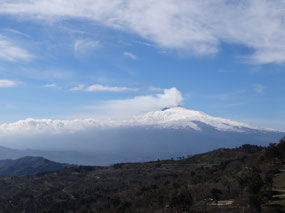
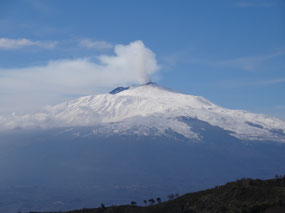
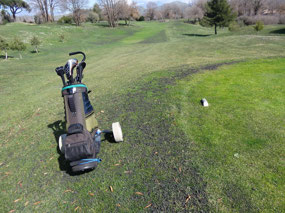
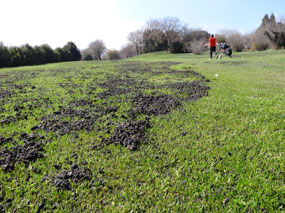

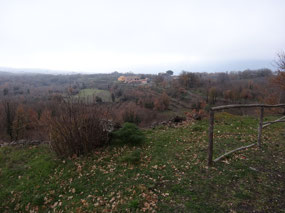
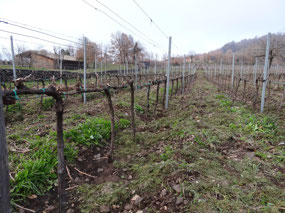




2025-05-23